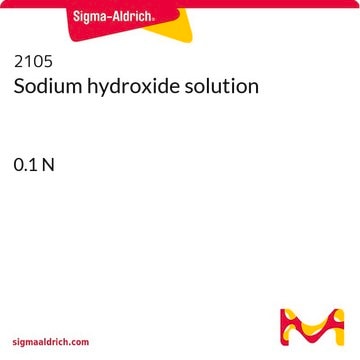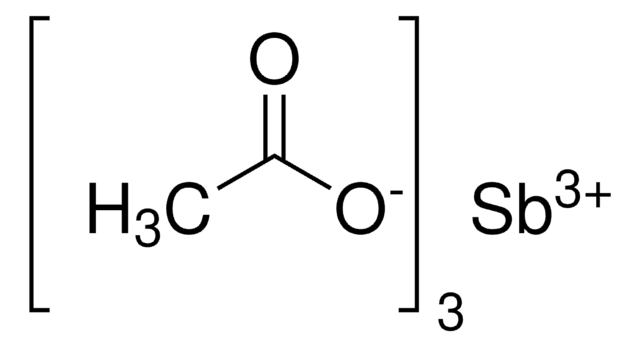Wichtige Dokumente
938998
Sodium hydroxide ChemBeads
Synonym(e):
Caustic soda ChemBeads
About This Item
Empfohlene Produkte
Beschreibung
Reagent Type: Inorganic salt
Qualitätsniveau
Form
solid
Zusammensetzung
loading of base, 14-16 wt. %
Eignung der Reaktion
core: sodium
SMILES String
[OH-].[Na+]
InChI
1S/Na.H2O/h;1H2/q+1;/p-1
InChIKey
HEMHJVSKTPXQMS-UHFFFAOYSA-M
Allgemeine Beschreibung
Anwendung
A reagent in the gold-catalyzed selective oxidation of glycerol to glyceric acid. A catalyst for the cross-dehydrogenative coupling of alcohols and hydrosilanes to synthesize silyl ethers.
A base in the Sonogashira-type coupling of aryl halides and alkynes to synthesize ynones.
For general uses, product is also available in powdered form(655104)
Leistungsmerkmale und Vorteile
Sonstige Hinweise
Versatile Methods to Dispense Sub-Milligram Quantities of Solids using Chemical Coated Beads for High-Throughput Experimentation
ChemBead Enabled High-Throughput Cross-Electrophile Coupling Reveals a New Complementary Ligand
Ähnliches Produkt
Signalwort
Danger
H-Sätze
Gefahreneinstufungen
Eye Dam. 1 - Met. Corr. 1 - Skin Corr. 1A
Lagerklassenschlüssel
8B - Non-combustible corrosive hazardous materials
WGK
WGK 3
Flammpunkt (°F)
Not applicable
Flammpunkt (°C)
Not applicable
Hier finden Sie alle aktuellen Versionen:
Analysenzertifikate (COA)
Die passende Version wird nicht angezeigt?
Wenn Sie eine bestimmte Version benötigen, können Sie anhand der Lot- oder Chargennummer nach einem spezifischen Zertifikat suchen.
Besitzen Sie dieses Produkt bereits?
In der Dokumentenbibliothek finden Sie die Dokumentation zu den Produkten, die Sie kürzlich erworben haben.
Unser Team von Wissenschaftlern verfügt über Erfahrung in allen Forschungsbereichen einschließlich Life Science, Materialwissenschaften, chemischer Synthese, Chromatographie, Analytik und vielen mehr..
Setzen Sie sich mit dem technischen Dienst in Verbindung.





